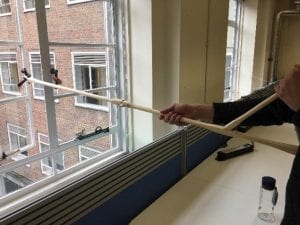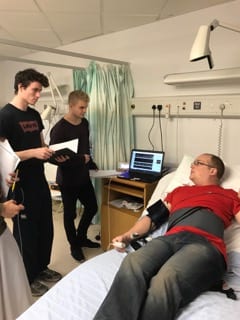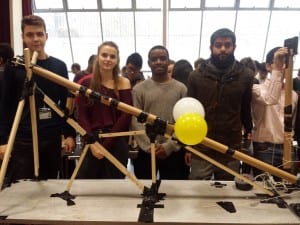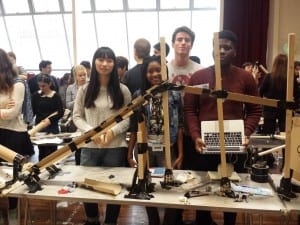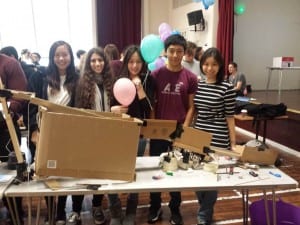By Adam Gibson, Konstantin Lozhkin and Gary Royle
We have a long-standing module on “treatment with ionising radiation“. Ten years ago, one of us, Konstantin Lozhkin, completed UCL’s teaching course run by CALT. For his dissertation, Konstantin proposed teaching the module using Problem-Based Learning techniques, and, back in the day before research-based teaching became a big thing, we decided to give it a try.
Problem-based learning (PBL) is not new. It was developed by Célestin Freinet who was injured during the First World War. After the war, he became a teacher, but due to his war injury, he found talking in class difficult. This acted as the inspiration for a new style of teaching where he set problems and encouraged students to solve them co-operatively thereby learning from each other. The concept was taken further by McMaster University Medical School, who pioneered teaching by PBL. It is now widely used, especially in medical schools and it is seen to give students responsibility for their learning, reinforce deeper understanding, lead to improved motivation and encourage the development of teamwork and collaboration.
Our implementation of PBL has changed somewhat. The task we used first was to ask the students to imagine they are a medical consultant for a TV drama series in which a character is about to undergo radiotherapy. Students were asked to write a portfolio for the scriptwriters which summarised the radiotherapy issues and propose a plot. This successfully engaged the students but we found that they could avoid the technical aspects of radiotherapy physics which was the whole purpose of the exercise. We therefore changed the task, and now we send the students a spoof email from a “head of department”, asking them to produce a research grant application which compares two forms of radiotherapy.
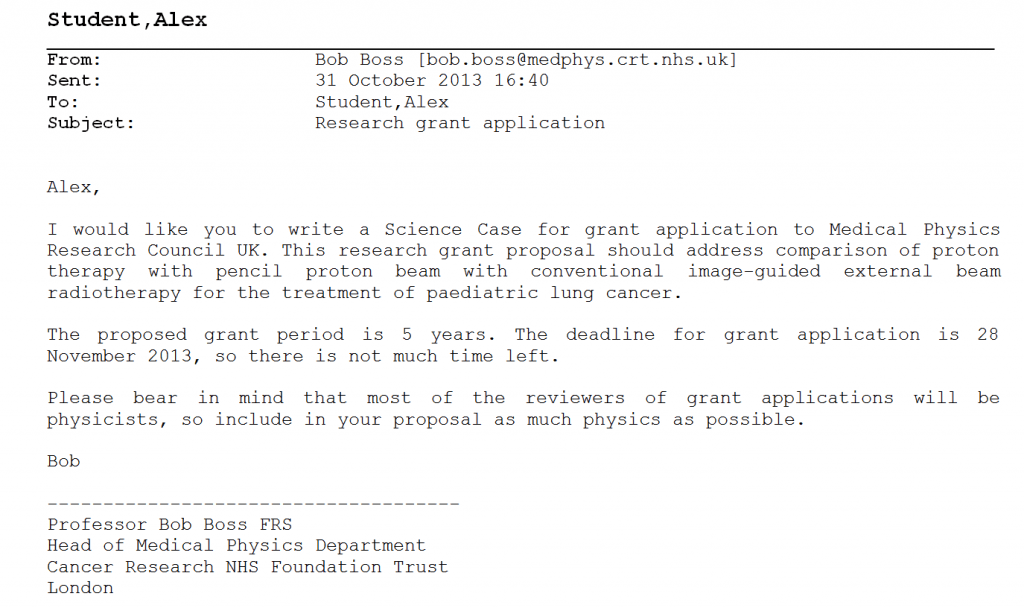
An example task for the problem based learning exercise
We give an introductory lecture which describes PBL, gives some tips on teamwork and how to prioritise tasks, and then provide space for students to meet with tutors once or twice a week. The task lasts for around 4 weeks, at the end of which each team of 5-6 students give a presentation and submit a portfolio. Individual students also fill in an anonymous sheet in which they assess their own contribution and that of their teammates, and they also write a short (<300 word) self-reflection. These let us differentiate individual effort from the team performance. One real advantage of this type of team-learning exercise in this module is that it attracts students from a wide variety of programmes (usually Medical Physics, medical students taking an intercalated BSc in Medical Physics, straight physics students, Natural Sciences students and often others), which encourages students from different disciplines to learn from each other. The presentations are invariable excellent, and often contain dose calculations, original data and a costing for the grant application. Feedback is given instantly after the presentations, and a later team-specific “email” is sent from the “Head of Department” commenting on the grant application.
We provide students with a Moodle forum which allows them to communicate with each other. They tend to find this limited, however, and organise their own electronic communication. Students have used email, Facebook, Google Docs, Dropbox, text messages, MySpace and WhatsApp. This means we are less able to track the group’s activity, but it wouldn’t be in the spirit of PBL to impose a particular method of communication on the students.
Students typically put in a lot of work and enjoy the exercise. Feedback to us from students includes “it’s been amazing working with such a brilliant team”, “I am grateful to have had the opportunity to learn so many valuable lessons”, a good experience to simulate working in the real world”, and “every member of the team worked hard and well so we ended up with a high quality final piece that I thoroughly enjoyed working on”.
We as staff enjoy it too. It’s good to see students develop in confidence as they come to grips with the problem they have been set, and to see the positive way in which they tackle the problem. There are disadvantages: it’s hard to give a genuine individual mark for a team effort such as this (although the peer assessment sheet and the reflective essay help), and we have sacrificed some lectures to make time for this, which reduces the core syllabus on which the exam is based. However, we feel the advantages outweigh the disadvantages and look forward to continuing this into the future, and perhaps extending PBL techniques into other modules.
 Close
Close



